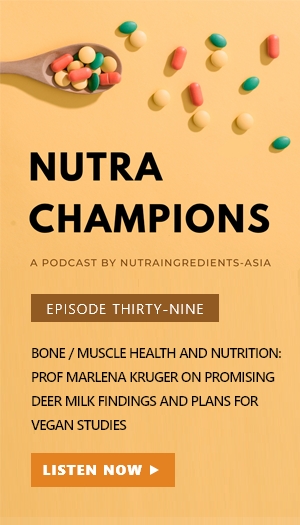Novel omega-3 therapy for dyslipidaemia may improve patient compliance, convenience: South Korean study

Dyslipidaemia, characterised by an imbalance in lipid profile, poses a substantial risk for atherosclerotic cardiovascular diseases (ASCVDs). To address this pressing health concern, medical experts emphasise the importance of managing lipid levels, particularly low-density lipoprotein (LDL) cholesterol. Current guidelines suggest that individuals at very high risk of ASCVDs should achieve LDL cholesterol levels below specific thresholds through lifestyle changes and lipid-lowering therapies.
Statins, which inhibit 3-hydroxy-3-methylglutaryl-coenzyme A reductase (HMG-CoA reductase), have emerged as frontline treatments for dyslipidaemia and ASCVD prevention. Despite their effectiveness in lowering LDL cholesterol levels, however, statin monotherapy may not adequately improve other lipid parameters such as triglycerides, very-low-density lipoprotein and high-density lipoprotein (HDL) cholesterol.
In response to this challenge, researchers have explored combination therapies, particularly involving statins and omega-3 fatty acids, to address residual lipid abnormalities and further reduce ASCVD risk. These combinations have shown promise in various clinical trials, demonstrating significant improvements in lipid profiles and cardiovascular outcomes.
A recent development in this field is the introduction of a FDC therapy comprising atorvastatin and omega-3-acid ethyl esters. This innovative formulation aims to enhance patient compliance and convenience by integrating both medications into a single capsule. The FDC, known as ATMEG CombiGel Softcap, has undergone rigorous testing to ensure both efficacy and safety.
The good, the bad and fatty
Based on this, researchers at the Seoul National University Hospital conducted a randomised, open-label, single-dose crossover trial to assess the efficacy and safety of combining these two commonly used treatments for dyslipidaemia. The study — which was approved by the institutional review board and the Korea Ministry of Food and Drug Safety — involved 43 male participants aged between 19 and 45 years, who were randomly assigned to one of two sequences.
Each subject alternately received either an FDC of atorvastatin and omega-3 acid ethyl esters (10/1,000 mg) or a loose combination of atorvastatin tablets (10 mg × 4) and omega-3-acid ethyl ester soft capsules (1,000 mg × 4) over four periods, with each period accompanied by a high-fat meal.
Pharmacokinetic parameters — including plasma concentration-time profiles, maximum plasma concentration (Cmax) and area under the time-concentration curve (AUC) — were assessed for atorvastatin, eicosapentaenoic acid (EPA) and docosahexaenoic acid (DHA).
The results indicated that the 90% geometric mean ratios (GMR) of the FDC to the loose combination for maximum Cmax and last AUC were within the acceptable bioequivalence range of 0.8 to 1.25 for atorvastatin, EPA and DHA. Safety and tolerability were also evaluated, with no serious adverse events reported. Treatment emergent adverse events were mild and comparable between the two formulations, indicating that both the FDC and the loose combination were safe and well tolerated.
The development of FDC formulations, such as the one tested in this study, aims to improve compliance and convenience for patients managing dyslipidaemia. Notably, the multi-layer barrier-coating technology employed in the FDC formulation allowed both atorvastatin and omega-3 acid ethyl esters to remain intact, maintaining the efficacy of the combined treatment.
Promising combination
Discussing the study's implications, researchers highlighted the potential of FDCs as a convenient therapeutic option for patients with combined hyperlipidaemia. By demonstrating comparable pharmacokinetic and safety profiles to loose combinations, these findings supported the viability of FDC formulations in clinical practice.
The study's authors acknowledged potential limitations, including variations in pharmacokinetics based on factors such as gender, ethnicity and health status. However, they emphasised the thorough baseline adjustments made in the study to mitigate these potential confounders.
They added: “In the administration of omega-3 fatty acids, findings from a prior clinical trial and published data showed a reduction in plasma DHA concentration for 12 hours after peak levels, followed by a subsequent increase. An isotope analysis study after EPA supplementation in humans demonstrated a substantial conversion of EPA to DHA, without retro-conversion of DHA to EPA.”
Overall, the research has contributed to the growing body of evidence supporting the use of FDC formulations in the treatment of dyslipidaemia, offering patients a convenient and effective option for managing their lipid profiles and reducing the risk of cardiovascular diseases in healthy Korean male subjects.
Source: National Center for Biotechnology Information
“Pharmacokinetic Comparison Between a Fixed-Dose Combination of Atorvastatin/Omega-3-Acid Ethyl Esters and the Corresponding Loose Combination in Healthy Korean Male Subjects”
https://doi.org/10.2147/DDDT.S435885
Authors: Juyoung Khwarg, et al.















